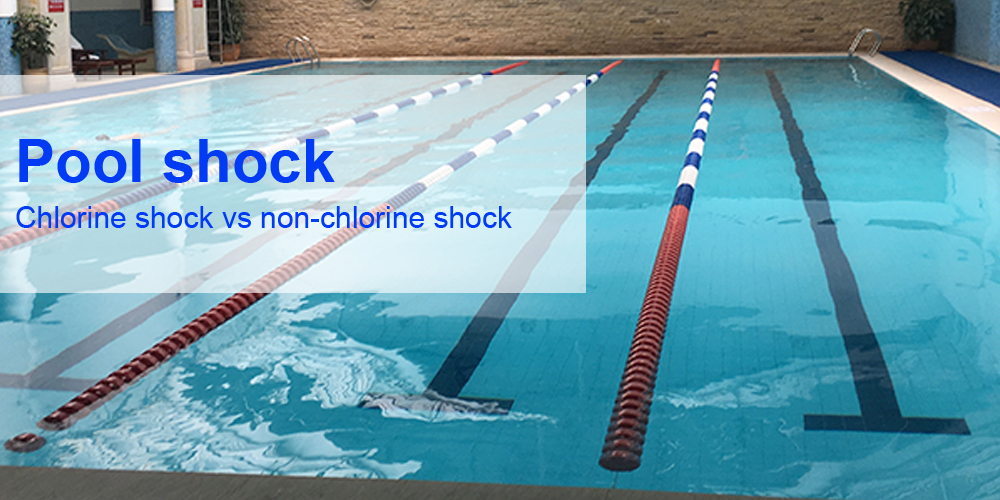Shocking a pool is an important part of pool maintenance. Generally, the methods of pool shocking are divided into chlorine shock and non-chlorine shock. Although the two have the same effect, there are still obvious differences. When your pool needs shocking, “Which method can bring you more satisfactory results?”.
First of all, you need to understand when shocking is needed?
When the following problems occur, the pool must be stopped and the pool must be shocked immediately
After being used by many people (such as a pool party)
After heavy rain or strong winds;
After severe sun exposure;
When swimmers complain of burning eyes;
When the pool has an unpleasant odor;
When algae grow;
When the pool water becomes dark and turbid.
What is chlorine shock?
Chlorine shock, as the name suggests, is the use of chlorine-containing disinfectants for shocking. Generally, a chlorine shock treatment requires 10 mg/L of free chlorine (10 times the combined chlorine concentration). Common chlorine shock chemicals are calcium hypochlorite and sodium dichloroisocyanurate (NaDCC). Both are common disinfection and shock chemicals for swimming pools.
NaDCC is a stabileized granular chlorine disinfectant.
Calcium hypochlorite (Cal Hypo) is also a common unstabilized chlorine disinfectant .
Chlorine shock advantages:
Oxidizes organic pollutants to purify water
Easily kills algae and bacteria
Chlorine shock Disadvantages:
Must be used after dusk.
It takes more than eight hours before you can swim safely again. Or you can use a dechlorinator.
Needs to be dissolved before it is added to your pool.(Calcium hypochlorite)
What is non-chlorine shock?
If you want to shock your pool and get it up and running quickly, this is exactly what you need. Non-chlorine shocks usually use MPS, hydrogen peroxide.
Advantages:
no odor
It takes about 15 minutes before you can swim safely again.
Disadvantages:
Cost is higher than chlorine shock
Not as effective for algae treatment
Not as effective for bacteria treatment
Chlorine shock and non-chlorine shock each have their own advantages. In addition to removing pollutants and chloramines, chlorine shock also removes algae and bacteria. Non-chlorine shock only focuses on removing pollutants and chloramines. However, the advantage is that the swimming pool can be put into use in a short time. So the choice should depend on your current needs and cost control.
For example, just to remove sweat and dirt, both non-chlorine shock and chlorine shock are acceptable, but to remove algae, chlorine shock is required. Whatever your reason for choosing to clean your pool, there will be great ways to keep your poolside crystal clear. Follow us to learn more about how we can help.
Post time: Aug-26-2024

